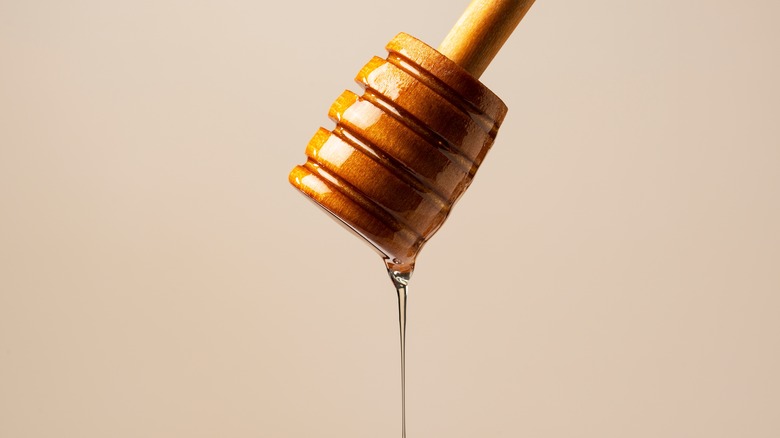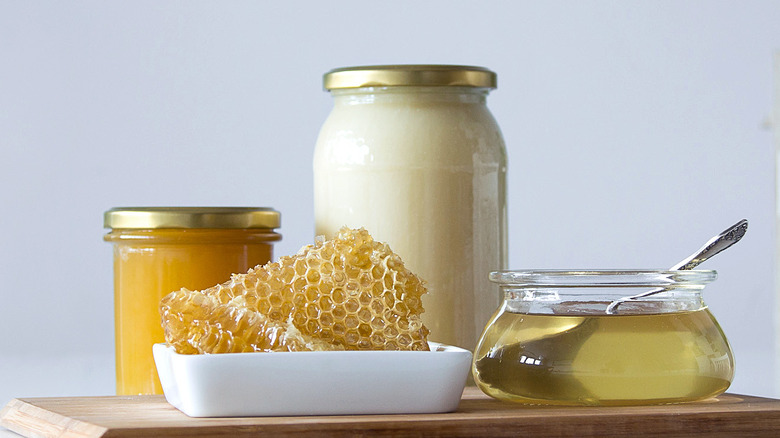The Scientific Reason Honey Crystallizes
Hello, honey! Thick, golden, and beloved by all (bears included), honey is a superfood — but that doesn't mean that it's supernatural. If you've ever picked up a jar of raw honey from the farmer's market, you've likely noticed that after a few months it'll start to crystallize. While those granules forming inside the liquid are harmless, there is a scientific reason as to why they appear.
Hard-working honeybees are behind every jar of this deliciously vibrant sweetener. After reaching the hive, Live Science explains that bees regurgitate the nectar they've collected from flowers between themselves before depositing it into a honeycomb, where it's fanned and sealed with beeswax. Interestingly enough, the Seattle Times reports that honey can vary in color, aroma, texture, and flavor based on where the bees source nectar. That means that a malty buckwheat varietal will be unlike a buttery avocado, or medicinal eucalyptus varietal, which is something to consider when adding honey into recipes.
Given that honey has a low moisture content, high level of acidity, and contains a bacteria-killing byproduct of hydrogen peroxide, Smithsonian Magazine outlines that golden good stuff can fight spoilage and last indefinitely, even if it's crystallized. But, why do crystals appear in the first place — if not to indicate spoilage?
The result of a supersaturated sugar solution
Honey crystallization actually says a lot about the quality of your honey. Raw, natural, and unadulterated honey is prone to crystallization, whereas mass-produced versions tend to undergo processes like pasteurization and filtration that help maintain a liquid texture, but often destroy aromas, flavors, and nutritional composition in the process (via Slow Food).
Since honey is a supersaturated solution of glucose and fructose, Innovative Food Science & Emerging Technologies explains that eventually the excessive amounts of glucose will separate from the solution as there isn't enough water to keep the sugars dissolved, resulting in crystals. Additionally, the presence of trace amounts of pollen and beeswax can also encourage crystals to form in the mixture. According to the Daily Excelsior, via Dow Gardens, all raw honey will eventually crystallize.
Although you can continue using crystallized honey as you normally would, it's not always the most aesthetic or texturally pleasing. In order to turn your honey back into a flowing liquid, the Daily Excelsior recommends placing the jar in warm water for 15 minutes, until the honey starts to liquefy. To avoid recrystallization, you can also store it in a warmer area, which will help avoid honey from thickening and developing granules.

